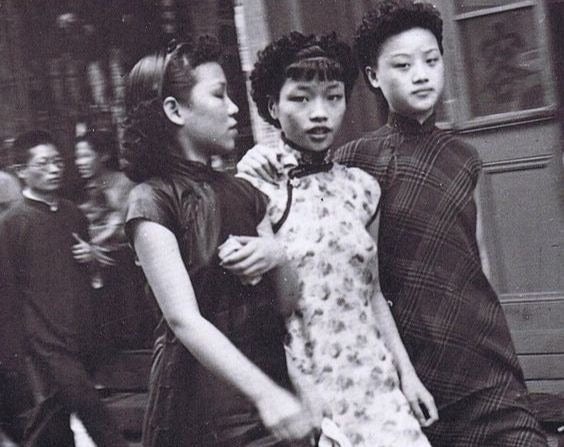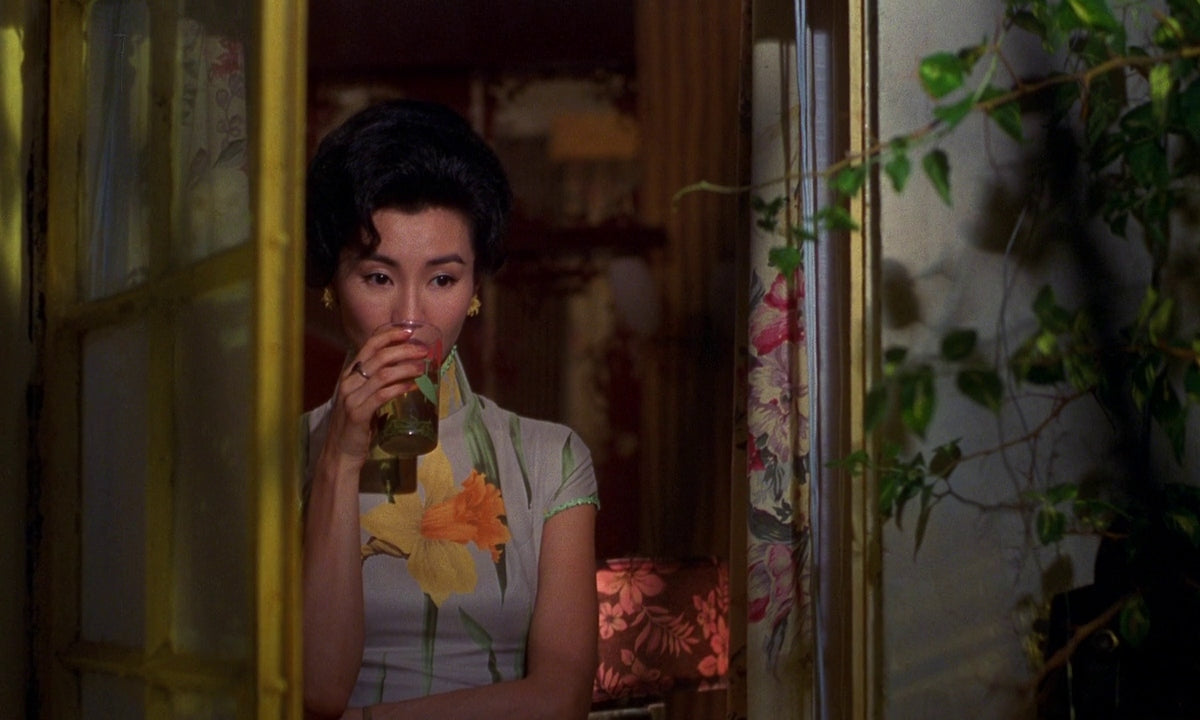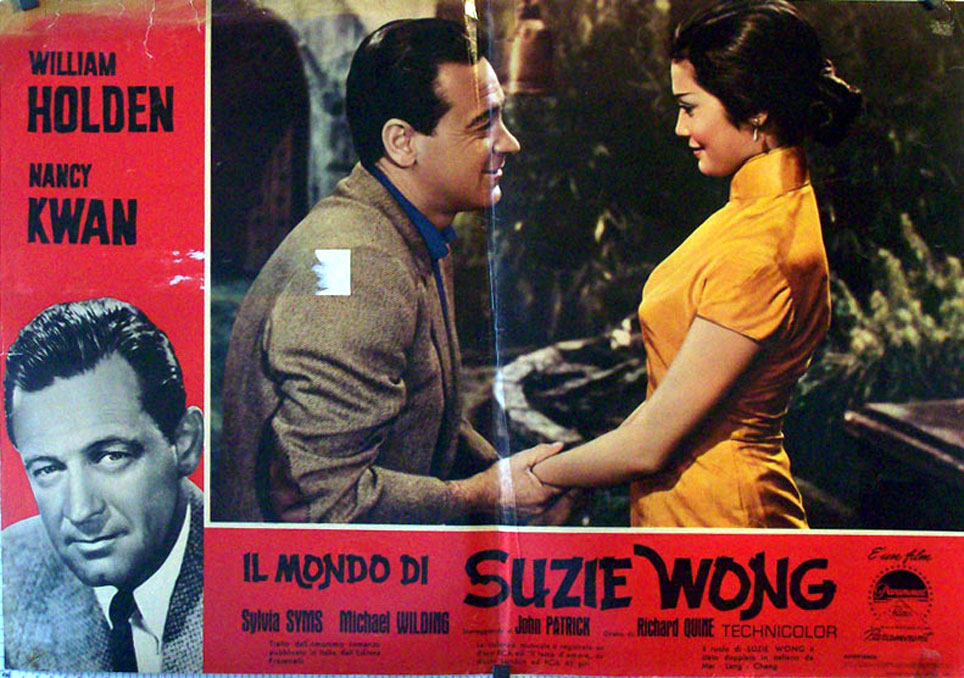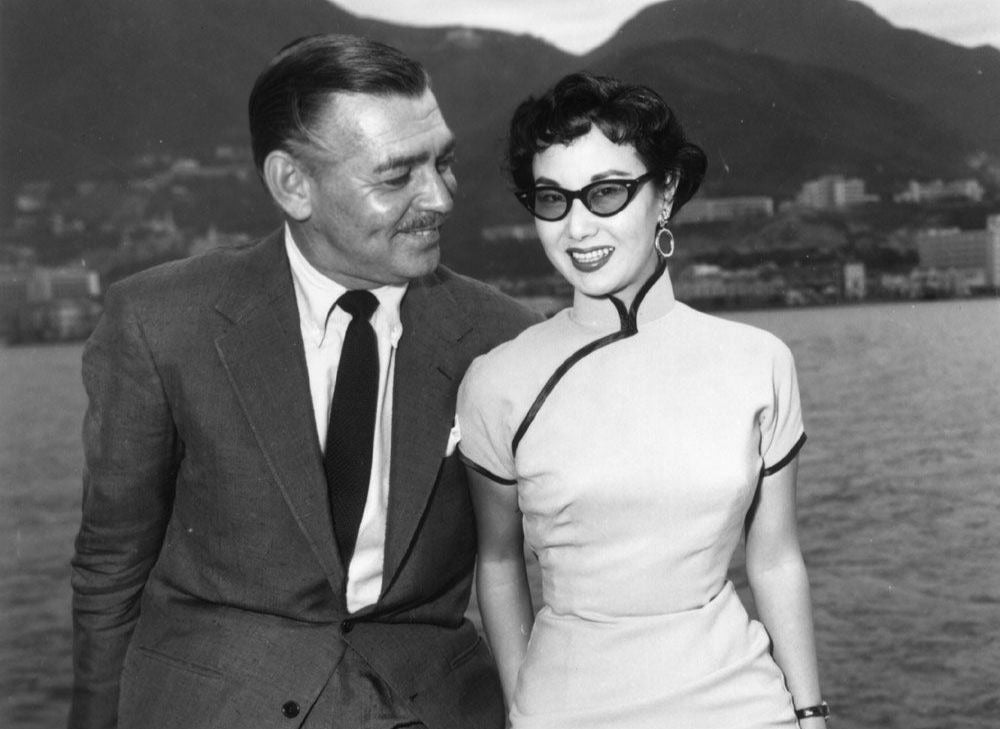A Brief History Of The Cheongsam
As Chinese New Year approaches, we delve into the archives to shed some light over one of history's most iconic Vintage pieces; the Cheongsam.
Shop vintage Cheongsam dresses
 Women wearing Cheongsams in 1930s Shanghai. Pic: Muslim China
Women wearing Cheongsams in 1930s Shanghai. Pic: Muslim ChinaOrigins of the Cheongsam
The origins of the traditionally very conservative and unrevealing Cheongsam are widely debated, but it is acknowledged that they were originally worn loose, only revealing the head, hands and tip toes of the wearer, aimed at concealing his or her age.
Originally a garment worn by men, it was soon adapted for female use and was primarily intended as an act of concealing the wearer. The modern keipo, or qipao, has been adapted into a more fitted and revealing garment, suggesting a shift into a more Westernized approach to tailoring at the turn of the century. During the 1920s, high class courtesans, celebrities and the social elite would all adopt the fitted qipao, the framework of which remained a traditional ceremonial garment dating back to the Qing dynasty. So too did Westerners favour the contemporary Cheongsam for its flattering, flirty fit.
 Young women in Peking, circa 1928. Pic: Pinterest
Young women in Peking, circa 1928. Pic: PinterestWesternisation of the Cheongsam
Following the end of the Opium War in 1842, the British were permitted to dictate where in China 'trade hubs' would be established. Shanghai was one, and was forced to adapt to the integration of a Western presence from Britain, France and America. The women of Shanghai were greatly influenced by the presence of these Western colonies and began to adapt their dress based on the European and American fashions they saw.
The transition towards a western tailoring of the traditional Cheongsam can be closely entwined with that of women's liberation and a feminist awakening come the 1920s and '30s. Silhouettes were trimmed down, hemlines were shortened, sleeves were capped and button fronts were added. The mandarin collar, traditional silk fabrics and lavish oriental embroidery and embellishment were still incorporated into these modernised Cheongsams.
 Two women wearing qipao dresses in 1930s Shanghai poster. Pic: International Student Voice
Two women wearing qipao dresses in 1930s Shanghai poster. Pic: International Student Voice Vintage Chinese fashion adverts featuring Cheongsam dresses. Pic: China Daily
Vintage Chinese fashion adverts featuring Cheongsam dresses. Pic: China DailyMany of these modern Cheongsam featured typical '60s prints; whilst slim fits that accentuated feminine figures became increasingly popular, so too did the demand for far out psychedelic patterned fabrics. Long sleeves were trimmed down and sleeveless or capped sleeve styles were favoured, making the once traditional qipao a wholly fashionable and contemporary garment.
Cheongsam in Popular Culture
With the Cheongsam a popular piece of clothing in China, it has also been widely appropriated in popular culture. Even as early as the 1920s, the Cheongsam became far more tailored than it had previously been, and was seen more as a garment to accentuate the figure rather than a ceremonial piece to hide it.
By the 1960s, the notion of the 'Chinese Bombshell' was born, with stars such as Nancy Kwan and Maggie Cheung gracing the silver screen in opulent and revealing Cheongsam's. So too did Western stars adopt the garment; Grace Kelly and Elizabeth Taylor were both big fans of them. By this time, the Cheongsam had been quite obviously Westernized, and as well as the cropped length and fitted body, hair was pinned into victory rolls and fur stoles and heels were added to complete the glamorous, Hollywood-esque look.
 Maggie Cheung starring alongside Tony Leung Chiu-wai in In The Mood For Love (2000). Pic: Foam Of Days
Maggie Cheung starring alongside Tony Leung Chiu-wai in In The Mood For Love (2000). Pic: Foam Of Days Maggie Cheung, In The Mood For Love (2000). Pic: Film Grab
Maggie Cheung, In The Mood For Love (2000). Pic: Film GrabSet in 1962, In the Mood For Love is a Chinese film centring around the love affair between Maggie Cheung and her co-star Tony Leung Chiu-wai. Although only released in 2000, the cinematography beautifully manipulates the look and feel of the story and transports it back to the 1960s. The aesthetic of the era is lovingly recreated in set and costume, right down to the Cheongsams Maggie wears throughout. There are over 20, and each pay homage to the contemporary, westernised Cheongsam ladies throughout Hong Kong wore during the period.
Nancy Kwan was another 'Chinese Bombshell' who emerged during this decade. Her roles in features such as The World of Suzie Wong and Flower Drum Song cemented her as a screen icon of her day, all played out in those '60s-esuque Cheongsam's.
 The World of Suzie Wong. Pic: Benito Movieposter
The World of Suzie Wong. Pic: Benito MovieposterBy the late 1950s and early '60s, the 'craze' for Cheongsam reached America, where screen sirens adopted the garment as their own, favoured for its Oriental, exotic feel and figure hugging style Both Elizabeth Taylor and Grace Kelly were both firm fans of the Cheongsam.
 The Cheongsam was a firm favourite with both Liz Taylor and Grace Kelly. Pic: Divine Stitches
The Cheongsam was a firm favourite with both Liz Taylor and Grace Kelly. Pic: Divine Stitches Clark Gable and Li Li-hua back in the 1950s. Pic: Pinterest
Clark Gable and Li Li-hua back in the 1950s. Pic: PinterestBeyond the Screen
Commercially, some airlines adopted the Cheongsam as uniform for flight attendants, most notably those in China and Taiwan, appropriating their 1929 National Dress symbol status, whilst the popularity of the Cheongsam experienced resurgence during the 1990s when a spate of celebrities that frequented the covers of Tween and high fashion magazines adopted the classic style. Everyone from Ginger Spice to Kate Moss were adding a touch of the orient to their wardrobes.
 1962 BOAC Air Stewardesses. Pic: Pinterest
1962 BOAC Air Stewardesses. Pic: PinterestCheongsam on the Runway
For the fashion conscious, designers have historically been hot on the heels of the Cheongsam, fashioning ways to make it contemporary enough for their Western spectators.
In 1993, Anna Sui incorporated into her Spring collection looks inspired by her Chinese heritage. The recognisable high mandarin collar, button front and slim fit filtered onto the catwalk embellished with delicate mesh, fringing and floral designs. Then again in 2011, Louis Vuitton re-imagined the Cheongsam, with their own take on the delicate embroidery, silk fabrics and figure-hugging silhouette with a lot of brocade and tassels; over stylised orientalism was the name of this game and it brought the ancient garment firmly into the 21 century.
 Anna Sui 1993 Spring Collection/Louis Vuitton 2011 Spring Collection. Pic: Vogue
Anna Sui 1993 Spring Collection/Louis Vuitton 2011 Spring Collection. Pic: Vogue











